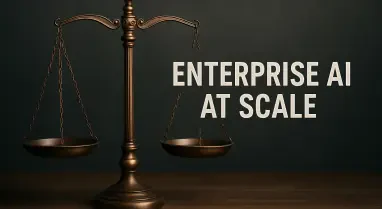In a world where billions of children log into social media platforms daily, a chilling question looms: are these digital spaces truly safe? A staggering report from Australia’s eSafety Commissioner reveals a dark underbelly of the internet, where major tech giants like YouTube and Apple appear to fall short in protecting kids from online sexual abuse. This isn’t merely about overlooked complaints—it’s about systemic gaps that leave the most vulnerable exposed to exploitation.
The Alarming Reality of Digital Danger
The internet, often hailed as a gateway to knowledge and connection, harbors a sinister side for children. With platforms like Meta’s Instagram and Google’s YouTube amassing billions of users, the potential for harm scales to unprecedented levels. Australia’s internet watchdog has raised a red flag, uncovering rampant circulation of child sexual abuse material across these services, pointing to a crisis that demands urgent scrutiny.
This isn’t just about numbers or abstract risks; it’s about real lives shattered by exploitation. The eSafety Commissioner’s findings paint a grim picture of tech companies struggling—or perhaps failing—to curb these dangers. The sheer volume of content shared daily makes oversight a Herculean task, yet the question remains: why aren’t more robust safeguards in place to shield young users from predators?
Why Child Safety Hangs in the Balance
The significance of this issue cannot be overstated. Children, often unaware of the risks lurking behind a screen, rely on these platforms for education, socializing, and entertainment. Yet, the same spaces meant to empower them can become tools for harm when oversight falters. The Australian regulator’s report, released recently, underscores a systemic lack of accountability among tech giants, spotlighting a gap between their public promises and actual outcomes.
This story matters because it exposes a critical flaw in an industry that shapes daily life for billions. When companies like YouTube are included in groundbreaking social media bans for teens in Australia—reversing planned exemptions—it signals a profound concern over their inability to address known threats. The stakes are high, as every delay in action translates to more children at risk of irreversible harm.
Exposing the Cracks in Tech’s Armor
Delving into the specifics, the eSafety Commissioner’s critique lays bare multiple failures among leading platforms. Companies like Apple and YouTube have been called out for not tracking or disclosing data on user complaints related to child sexual abuse material. This lack of transparency leaves both regulators and the public blind to the scale of the problem and the speed of response—or lack thereof.
Further scrutiny reveals inconsistent adoption of critical tools like hash-matching technology, which identifies abusive content, across services from Meta to Discord. Even more troubling are unaddressed risks such as livestreaming of abuse and the unchecked sharing of harmful links on platforms like WhatsApp and Skype. These gaps aren’t mere oversights; they represent a troubling pattern of inadequate prevention mechanisms in an industry with vast resources at its disposal.
The Australian government’s decision to enforce strict measures, including social media restrictions for younger users, reflects the depth of concern. A particular focus on YouTube, despite its global influence, highlights how even the biggest players are not immune to criticism when child safety is compromised. This mounting evidence suggests that self-regulation alone may not suffice to tackle such pervasive issues.
Voices From the Frontline
Julie Inman Grant, Australia’s eSafety Commissioner, has not minced words in her assessment of the situation. She accuses tech giants of “turning a blind eye” to horrific crimes unfolding on their platforms, emphasizing that no other consumer-facing sector would evade such intense scrutiny for similar negligence. Her pointed critique challenges the industry’s priorities, questioning why child protection isn’t at the forefront.
Despite public statements from companies like Google and Meta about deploying AI and detection tools to combat abuse, the regulator’s findings indicate these efforts are often sporadic or insufficient. Apple’s silence on specifics, such as staffing for trust and safety or the volume of abuse reports, only deepens public skepticism. Experts argue this opacity reflects a broader reluctance to fully engage with the gravity of the problem, prioritizing profits over protection.
The disconnect between corporate claims and regulatory observations fuels a growing distrust. When billions of users, including countless children, rely on these platforms daily, the absence of clear, consistent safety measures becomes not just a policy failure but a moral one. The voices of authority are clear: the status quo cannot persist without dire consequences.
Charting a Path to Safer Digital Spaces
Addressing these glaring deficiencies requires a multifaceted approach that goes beyond mere promises. Stronger regulatory oversight stands as a critical first step, with models like Australia’s social media ban for teens offering a blueprint for holding tech companies accountable. Such policies shift the burden from users to platforms, ensuring safety isn’t an afterthought but a core mandate.
Transparency must also be non-negotiable. Public reporting on abuse complaints, response times, and safety staffing by companies can foster accountability and rebuild trust. Simultaneously, the uniform adoption of existing technologies like AI-driven detection and hash-matching across all services—not just select ones—could close many existing loopholes that predators exploit.
Beyond policy and technology, education plays a vital role. Equipping parents and educators with resources to guide children on online risks is essential, though the primary responsibility must rest with platforms. These combined efforts, inspired by the eSafety Commissioner’s recommendations, lay the groundwork for transforming the internet into a space where children can explore without fear.
Reflecting on a Troubled Landscape
Looking back, the revelations from Australia’s eSafety Commissioner painted a sobering picture of an industry grappling with its duty to protect the youngest users. The systemic shortcomings of tech giants, from transparency deficits to inconsistent safety measures, exposed a critical vulnerability in the digital ecosystem. Each finding underscored a painful truth: self-regulation often fell short when it mattered most.
The path ahead demands more than acknowledgment—it requires decisive action. Stricter regulations, enhanced transparency, and a unified push for better technology adoption emerged as essential steps to safeguard children. As society reflected on these challenges, the hope was that such measures would eventually reshape the internet into a haven, not a hazard, for the next generation.






